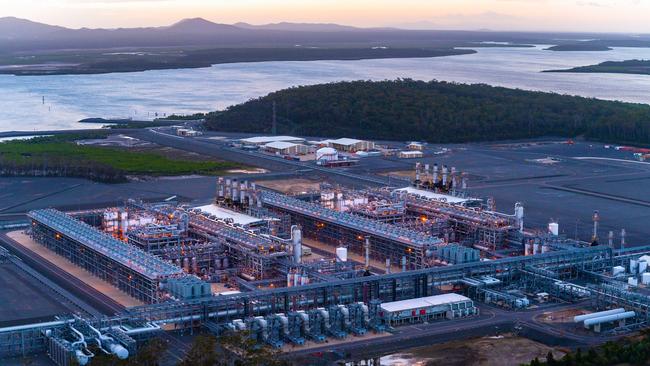Rethinking Victoria’s LNG import plan

But let’s be clear: importing gas is a high cost and high emissions way for Victoria to treat the symptoms of Australia’s East Coast gas crisis without addressing its cause.
In the long term, it is likely to do more harm than good, and Australia will never regain its energy cost advantage – nor secure the future of manufacturers that need competitively priced gas – if we entrench import parity pricing.

Manufacturers bear the brunt of policy failure
The paradox of Australia exporting vast quantities of gas while contemplating imports and imposing restrictions on local gas exploration and development reflects successive policy failures at all levels of government.
Manufacturers are already bearing the brunt of those policy failures, facing gas prices substantially higher than their international competitors face, with growing uncertainty over long-term supply.
Government-subsidised imports offer little comfort. Such a scheme might temporarily increase gas supply to help meet Winter demand peaks.
But it would become policy quicksand, doing nothing to address the structural problems in our gas market, while deterring investment in gas supply, pipeline and storage infrastructure necessary to bring lower cost, lower emissions gas to customers.
Develop and reserve gas, don’t import Manufacturers have consistently argued that Australia needs neither subsidised imports nor price caps, but rather a functional domestic reservation policy and market reforms that ensure adequate supply at internationally competitive prices. Australia has abundant gas resources – more than enough to meet the needs of domestic customers, alongside a globally significant LNG exports industry.

To be clear, we can – and should – have both. That we have so far failed to get that balance right is regrettable. We have maximised the benefit to LNG exporters at the expense of Australian customers for a decade.
But we don’t have to continue that way.
We need to find a more durable solution, for all parties. Reserving domestic gas for manufacturing is critical, because manufacturing relies on competitively priced gas to underpin current and future investments.
Energy policy isn’t just about keeping lights on – it’s about maintaining sovereign manufacturing capabilities for future generations in industries like food and fertiliser production, building materials manufacturing, chemical production and metals manufacturing.
It’s also about seizing the profound emissions reduction opportunities for those industries – like steel manufacturing – that could dramatically reduce emissions by converting from coal-based to gas-based processes.
Both those objectives are at risk if we entrench import parity pricing that effectively gives away any competitive advantage Australia enjoys from its resource abundance. Growing momentum for policy reform. The path forward should include four key elements.
First, we should support and accelerate new domestic gas development, with appropriate environmental safeguards. Too many in this debate have become seduced by the notion that Australia can continue to meet demand for LNG exports, gas fired power generation and industrial gas consumption, without developing new gas resources.
New sources of gas critical
We do need to develop new sources of gas.
The sooner we focus our attention on how we prioritise and allocate those resources, the better.
Second, the time has come for a consistent national gas reservation policy, modelled on Western Australia’s successful approach.
Gas reservation should be applied not just to new gas fields, but also to expansions of existing projects, any uncontracted or end-of-contract gas and any gas that is “freed up” as households and businesses choose to electrify.
Third, reforming regulatory frameworks is necessary to increase transparency and competition while reducing dominant producers’ market power.
Removing regulatory impediments to transport and storage of gas is also needed, to ensure we can get gas from production to customers efficiently, as well as manage the increasingly seasonal nature of gas demand as gas-firmed renewables becomes a feature of our power grid.
Fourth, we need to provide a bridge for those customers – especially at risk manufacturing plants – that cannot wait until new developments come online.
These measures could include facilitating gas “swaps”, financial support for at risk plants or other measures.
Crucially, governments will play a facilitative role in bringing stakeholders together to identify and implement these interim solutions without distorting long-term market development.
Let’s not beat about the bush: these are significant policy interventions. But so too is subsidising capital intensive imports projects. If we are going to intervene, far better to lean into the hard work of nationally consistent policy reforms that might just put Australia’s East Coast gas market on a path to repair.
Encouragingly, political support for a national gas reservation policy is growing. Policymakers across the spectrum now recognise that Australia’s energy resources should benefit domestic consumers and manufacturers first, while maintaining a robust export industry.
Victoria can help to lead this consensus by championing a comprehensive gas reservation framework benefiting all States. Australia doesn’t need imported gas.
We should develop and reserve domestic gas for manufacturers and local customers, rather than pursue solutions that entrench import parity pricing.
What’s required is political courage to ensure our abundant natural resources benefit the entire economy, not just the export sector.
Ben Eade is chief executive of Manufacturing Australia



The Victorian government is considering underwriting liquefied natural gas imports to address supply concerns. Those supply concerns are real, and Victoria’s predicament is both challenging and unenviable.